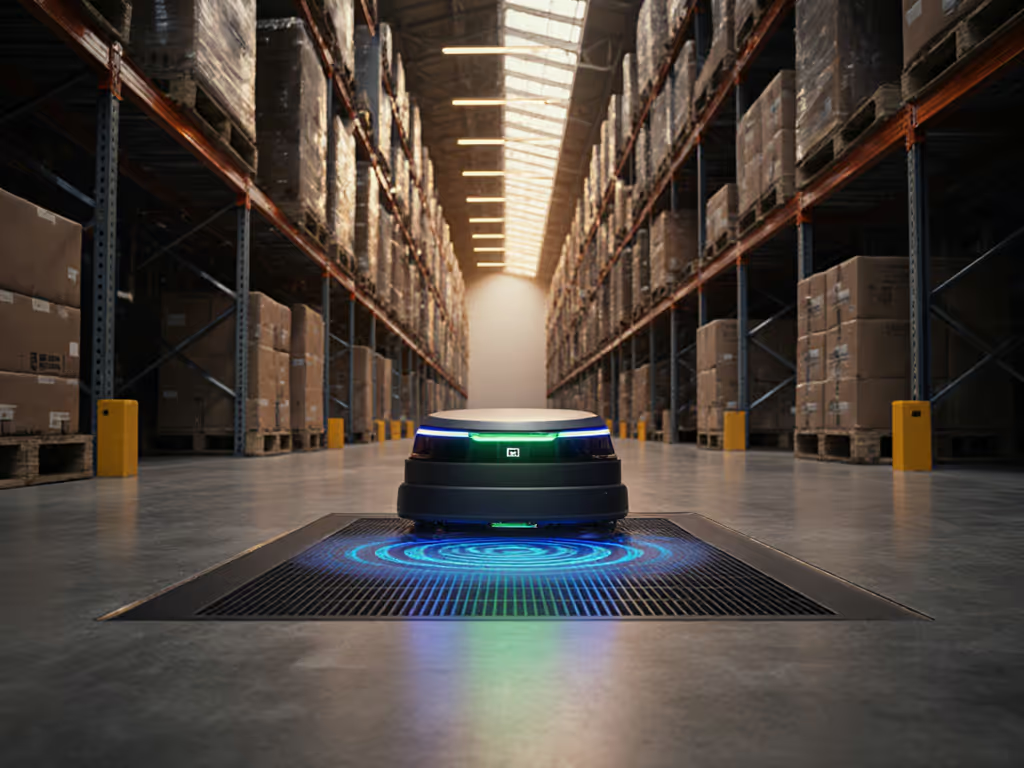
Energy Harvesting Wireless: Battery-Free Power Solutions

Introduction
As concerns about battery longevity and environmental impact grow, energy harvesting wireless technology has emerged as a promising solution for sustainable power delivery. Unlike conventional wireless charging that requires external power sources, ambient wireless power systems capture and convert existing energy from the environment into usable electricity. This field represents a fundamental shift from consuming power to harnessing what already surrounds us (whether from radio waves, temperature differentials, or mechanical motion). A cool battery is a long-lived battery, and energy harvesting approaches offer pathways to maintain optimal thermal conditions while extending device functionality. For battery-conscious users, understanding these systems could prevent scenarios where overheating compromises both immediate performance and long-term capacity, something I've experienced firsthand when navigation demands outpaced a charging solution's thermal management.
What is Energy Harvesting Wireless?
Energy harvesting wireless (EHW) refers to systems that capture ambient energy from the environment and convert it into electrical power to operate electronic devices without batteries or wired connections. Unlike Qi or MagSafe charging (which still require grid power), EHW sources draw from naturally occurring or omnipresent energy forms.
Key distinctions from traditional wireless charging:
- Power source: EHW uses ambient energy (RF signals, vibration, thermal gradients), while conventional wireless charging requires active power transmission from a connected source
- Deployment: EHW systems operate without wall power, enabling truly battery-free operation
- Output: EHW typically generates microwatts to milliwatts, suitable for low-power sensors rather than full smartphone charging
The AirFuel RF standard, finalized in late 2022, represents a significant step toward standardization of RF-based energy harvesting, moving beyond proprietary implementations toward interoperable solutions.
What Are the Main Sources of Ambient Wireless Power?
RF Energy Harvesting
Radio Frequency (RF) energy harvesting captures electromagnetic waves from ambient sources like:
- Cellular base stations
- Wi-Fi routers (2.4 GHz / 5 GHz)
- Broadcast television and radio signals
- Bluetooth transmissions
A typical RF energy harvesting system includes three components:
- A tuned antenna to capture specific frequencies
- An AC-to-DC converter (rectifier)
- Power management circuitry to stabilize output
While ambient RF energy exists everywhere, practical implementations face limitations. As noted in a 2020 PMC study, "the overall ambient RF energy in a typical environment often does not get large enough to be a reliable source" for today's power-hungry consumer devices. Dedicated RF transmitters placed strategically can overcome this limitation through controlled harvesting, boosting available power at specific locations.
Vibration Energy Harvesting
Vibration energy harvesting converts mechanical motion into electricity through piezoelectric materials or electromagnetic induction. Applications include:
- Industrial equipment monitoring sensors that leverage machine vibrations
- Foot-traffic powered floor tiles in high-traffic areas
- Vehicle-mounted sensors harvesting road vibration
These systems typically generate power proportional to vibration frequency and amplitude, making them location-dependent but reliable in consistent mechanical environments.
Thermal Energy Harvesting
Thermal energy harvesting exploits temperature differentials through thermoelectric generators (TEGs). This approach works on the principle that any two surfaces with different temperatures can generate electricity.
Practical implementations include:
- Body-heat powered wearable sensors
- Industrial pipeline monitoring using heat differentials
- Automotive applications leveraging engine heat
Each thermal gradient of 1°C can generate approximately 20-200 microvolts per thermocouple, requiring multiple elements connected in series for useful output.
How Does RF Energy Harvesting Work in Practice?
RF energy harvesting operates through a multi-stage conversion process:
- Reception: Specialized antennas capture RF waves across specific frequency bands
- Rectification: Non-linear semiconductor components convert AC signals to DC power
- Accumulation: Energy storage elements (capacitors or thin-film batteries) accumulate harvested power
- Regulation: Power management circuits deliver stable voltage to the load
The efficiency of this process depends critically on distance from the RF source. Research shows power density decreases with the square of distance, meaning doubling the distance reduces available power to one-fourth. At 1 meter from a typical Wi-Fi router, available power might reach 10 to 100 microwatts, but it drops to mere nanowatts at 10 meters. See our analysis of far-field wireless chargers for room-scale power trade-offs and real-world results.

Despite these limitations, practical applications have emerged. For instance, RFID tags use backscatter communication combined with minimal energy harvesting to operate without batteries. Smart building sensors can run indefinitely by harvesting ambient RF while in sleep mode, activating only when sufficient energy accumulates.
What Are the Current Limitations?
While promising, energy harvesting wireless technologies face significant constraints:
- Power density limitations: Ambient sources typically provide microwatts, insufficient for high-power devices
- Distance dependency: RF harvesting efficiency drops dramatically with distance from source
- Environmental variability: Signal strength fluctuates with physical obstructions and atmospheric conditions
- Frequency specificity: Harvesters optimized for one band often can't leverage other frequencies
- Component inefficiencies: Rectification losses typically consume 30-50% of captured energy
A 2023 industry analysis confirmed that "the energy in RF waves is very weak", often representing just 0.001% of the energy available in conventional power sources. This explains why current implementations focus on ultra-low-power applications like environmental sensors rather than consumer electronics charging.
Health-first beats hype. When evaluating any power solution, consider whether it maintains thermal thresholds that preserve battery longevity rather than chasing maximum wattage.
How Does This Impact Battery Longevity?
For conventional battery-powered devices incorporating energy harvesting, the thermal implications matter most. Lithium-ion batteries experience accelerated degradation above 30°C, with capacity loss increasing exponentially as temperatures rise. For the underlying physics of heat generation and safe charging practices, see our heat and safety science guide. The summer road trip scenario mentioned earlier (where navigation demands combined with poor thermal management created a 43°C+ situation) highlights why power solutions must prioritize thermal management.
Energy harvesting wireless systems inherently operate cooler than high-wattage charging solutions because they generate minimal heat during operation. A self-powered wireless sensor running on harvested energy maintains near-ambient temperatures, avoiding the thermal stress that plagues fast-charging implementations.
Practical safeguards for battery health include:
- Implementing temperature thresholds that suspend charging above 35°C
- Using pulsed rather than continuous charging to allow thermal recovery
- Selecting power solutions with integrated thermal monitoring
- Prioritizing consistent low-power input over sporadic high-power bursts
Conclusion: Future Outlook and Further Exploration
Energy harvesting wireless represents a paradigm shift toward sustainable power solutions, particularly for the growing ecosystem of IoT devices. For practical applications in connected homes, explore battery-free smart home power. While current technology cannot replace conventional charging for smartphones, it enables battery-free operation for sensors and ultra-low-power electronics, extending functionality without adding maintenance requirements.
As the field evolves, standardization through initiatives like AirFuel RF will improve interoperability and efficiency. Future implementations may combine multiple harvesting techniques (hybrid systems) to overcome individual limitations and provide more reliable power.
For those interested in exploring how these technologies might integrate into future ecosystems, academic journals like IEEE Transactions on Industrial Electronics regularly publish advances in energy harvesting efficiency. Industry consortia including AirFuel Alliance and EnOcean Alliance maintain technical resources documenting real-world implementations and performance metrics.
Remember that when evaluating any power solution, the fundamental principle remains: Protect the pack, and performance naturally lasts the distance. As you consider future wireless power implementations, prioritize systems that maintain thermal integrity, because health-first beats hype in the long run.




